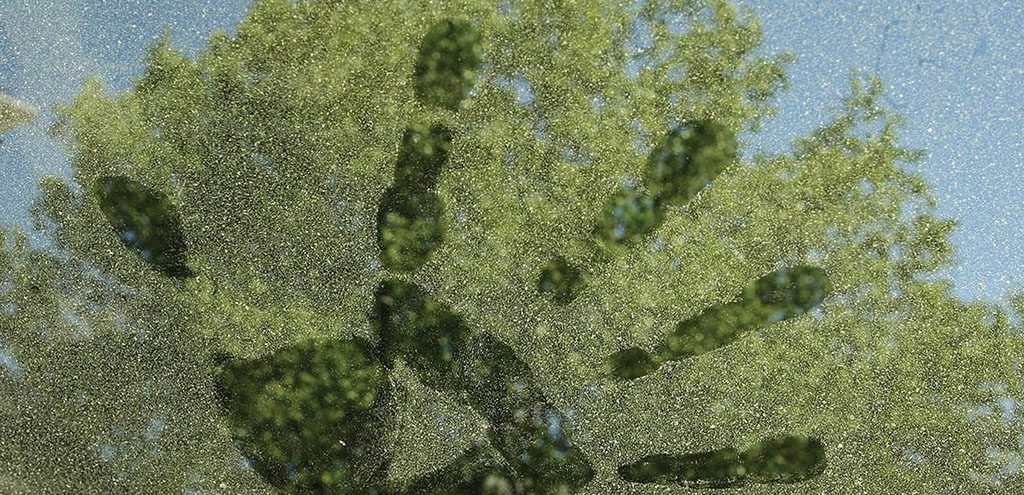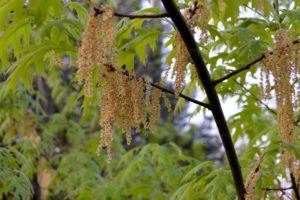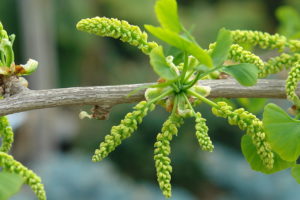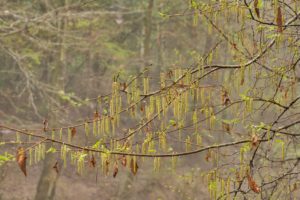
The weather is warming. The flowers are blooming. Noses are running. Eyes are watering. Spring is here!
It’s also allergy season. Forecasters expect 2019 to be worse than usual, if not the worst year ever, for allergies. Just like 2018, the year before that, and the year before that. But it turns out there’s truth behind the bombast: Pollen, an allergy trigger for one in five Americans, is surging year after year. And a major driver behind this increase is climate change. Thanks to warming temperatures and increasing amounts of carbon dioxide in the atmosphere, pollen is emerging earlier in the year and the season is stretching out longer and longer. More pollen means more seeds, which means more pollen producing plants and trees. A vicious cycle, if you will.
While it’s pretty much impossible to avoid, if you suffer mightily from allergies (which you might have developed after moving to D.C.), here are top pollen producing trees:

Oak (Quercus)
Producing about half our annual tree pollen, oaks and their curious catkins are particularly terrible. And with over 600 different kinds of species, you’re bound to run into one of these. Oaks are often large trees, with long limbs and broad trunks. You probably know their fruit, the acorn. Oak trees pollinate through a long cluster of flowers called catkins, which develop before their leaves and dangle at the tips of branches, waiting for a wind gust to carry the pollen. Part of the problem is oaks have such a long period of pollen production – from February to late May. You know the distinctive yellow smudge on cars (or anything else) near the trees during the pollen season, which peaks in mid-April. This tree’s pollen has an OPALS allergy scale rating of 9 out of 10.

Gingko (Gingko bilboa)
A throwback to prehistoric times, the gingko is a beautiful shade tree with unique fan-shaped leaves that turn a beautiful yellow in fall, and distinctly furrowed corky bark that is gray-white in color. This tough urban tree is able to withstand varied conditions and stresses. Only plant male varieties to avoid the unpleasant smells associated with rotting ginkgo fruits. However, only planting male trees has problems as well. This tree’s pollen has an OPALS allergy scale rating of 7 out of 10.

Elm (Ulmus)
A beautiful shade tree that once graced cities and towns nationwide, the American elm was devastated by Dutch elm disease from the 1950’s – on. Fortunately, disease-resistant strains are now available, and the elm can again be enjoyed for its elegant vase shaped crown, distinct saw-toothed leaves, yellow fall foliage, and its ability to thrive in tough urban environments. Like oaks, elms rely on wind for propagation, and they have quite a high rating on the OPALS allergy scale: 7.
(Above Photo: Michael Orrell AP)

